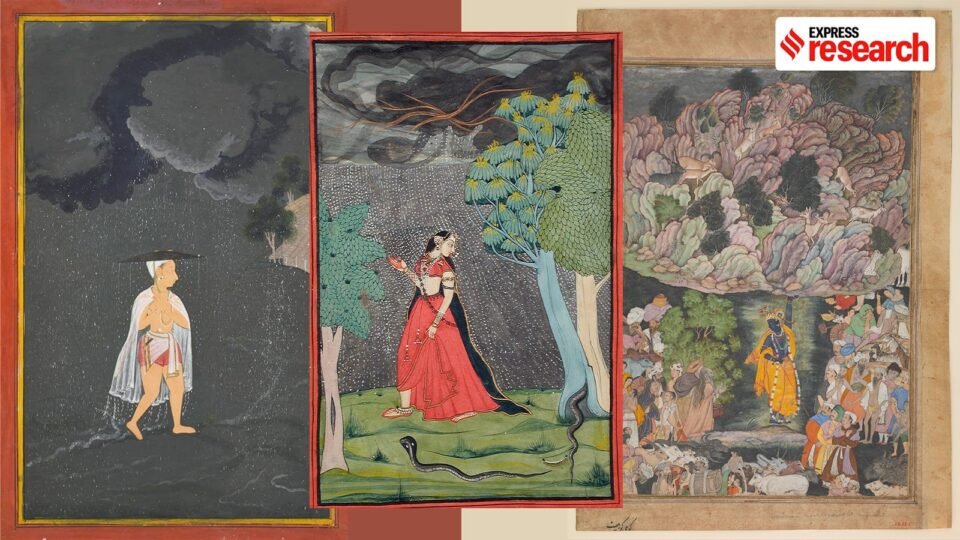námasâ vivāsa / kánikradad vrsabhó jīrádānū réto dadhāty ósadhīsu gárbham /
… ájījana ósadhīr bhójanāya kám utá prajâbhyo ‘vido manīsâm”
(Sing with these songs thy welcome to the Mighty, with adoration praise and call Parjanya/ The Bull, loud roaring, swift to send his bounty, lays in the plants the seed for germination/ Thou hast made herbs to grow for our enjoyment: yea, thou hast won thee praisefrom living creatures)
–Parjanya Sukta, Rigveda
The rain motif has always reigned supreme in Indian cultural productions. It has inspired poets and artists alike, while also being the subject of Vedic hymns sung to propitiate the rain gods to send in timely showers. The cultural significance of the monsoons is also rooted in their influence on the Indian economy. The phrase “the Indian budget is a gamble on the monsoon” has often been repeated by economists and finance ministers in India, ever since senior British official, Guy Fleetwood Wilson, made it popular in 1909.
At first glance, the representation of monsoons in South Asian art would appear to be dominated by a specific set of motifs and symbolic structures—passionate lovers in the rain, young women braving clouds and lightning to meet their loved one, peacocks, lush greenery and playful animals.
In their book, Monsoon Feelings: A History of Emotions in Rain (2018), historians Imke Rajamani, Margrit Pernau, and Katherine Butler Schofield write that although these recurring themes and symbols in Indian art would lead one to assume that the monsoons elicited the same kind of emotions across time and region, that, in fact, was not true. “Monsoon feelings have a history, which encompasses both continuity and change,” they write. They also point to the rise and decline of the Indus Valley Civilisation, which they write is attributed to changing patterns of monsoons.
Story continues below this ad
The monsoons, the emotions associated with them, as well as their representation in the arts, are influenced by where and when one experiences them. They are also affected by processes of migration, integration and transcultural conflations.
Take, for instance, the kingdom of Bikaner, which has historically been one of the driest states of India. However, as noted by art historian Molly Emma Aitken in her article, ‘Dark, Overwhelming, yet Joyful: The Monsoon in Rajput Painting’, “the ceilings and walls of its Junagadh Fort burst with monsoon clouds and driving lines of rain, with white cranes flying across wall panels of monsoon black.” Here, monsoon was celebrated for being auspicious and bearing the promise of fertility.
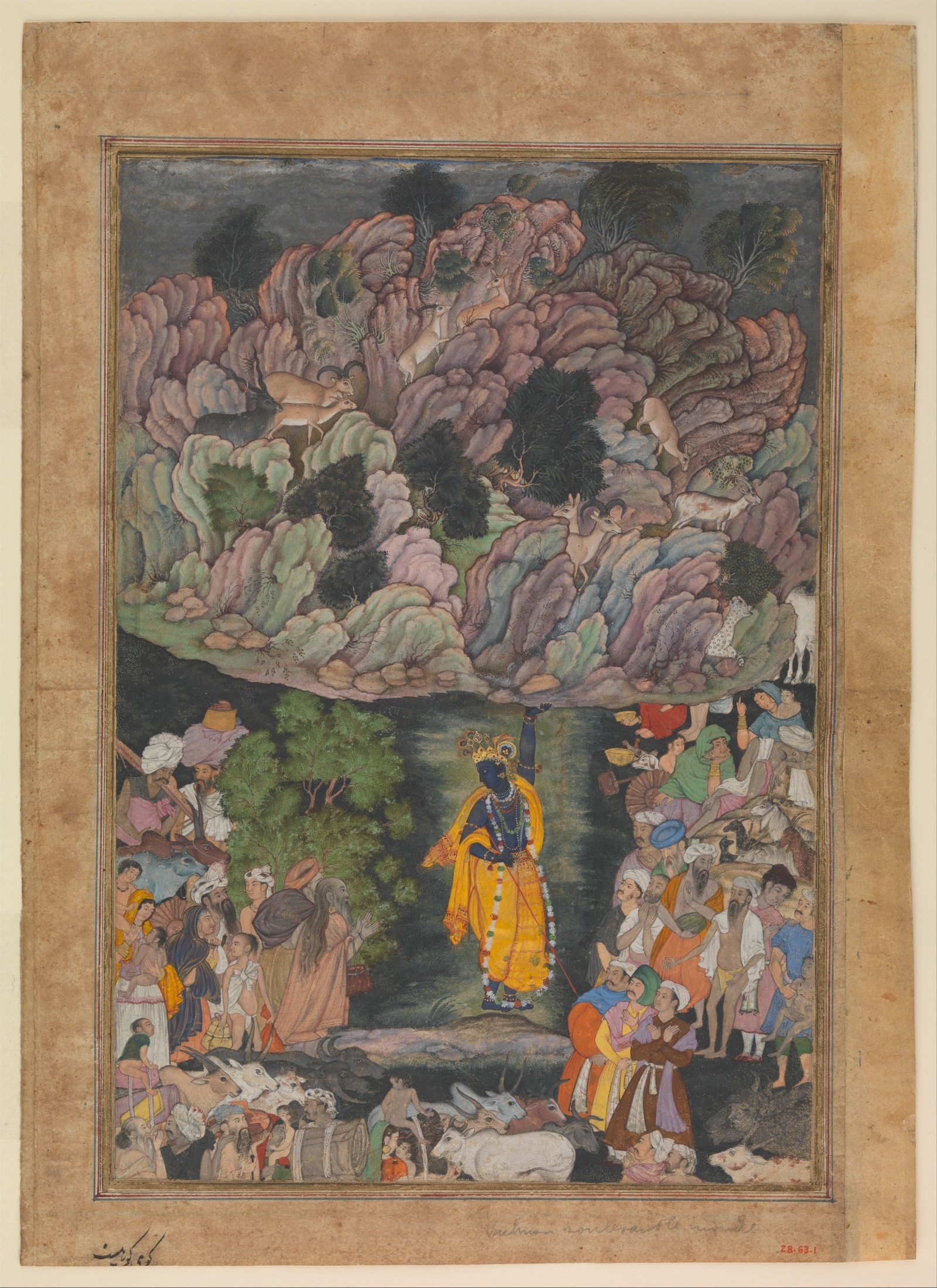 http://www.metmuseum.org/art/collection/search/448183
http://www.metmuseum.org/art/collection/search/448183
Yet there are other paintings from North India that serve as reminders of the despair that too much rain can bring and the need for divine interventions in such situations. An example is a 16th century folio from the Harivamsa showing Lord Krishna holding up Mount Govardhan to shelter the villagers of Braj.
Abhisarika Nayika braving the rains
A favourite figure in monsoon art is that of Abhisarika Nayika, one of the ashtanayikas or the eight types of heroines in classical Indian aesthetics. In paintings, Abhisarika Nayika is depicted as the fearless woman venturing into the stormy night to meet with her lover. She is shown as a pale figure in a dark, rainy, demon-infested night, mindless of the obstacles on her way, including that of vipers entangled around her legs. The rain and lightning in these paintings are the symbol of an obstacle to love, but also of the heroine’s boldness and passion.
Story continues below this ad
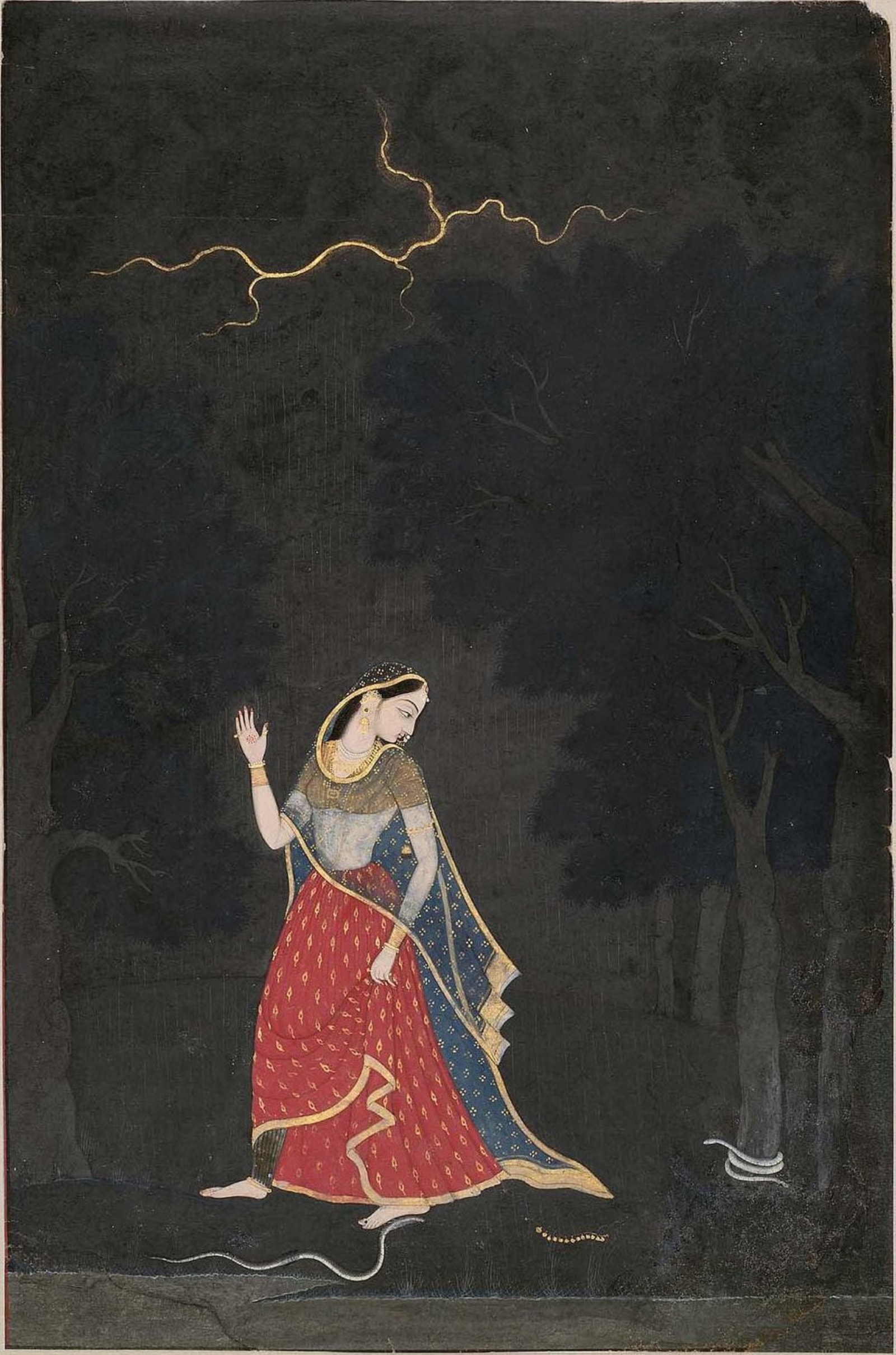 A 19th-century Pahari painting depicting Abhisarika Nayika by Mola Ram. She turns back to see the anklet that has fallen off. There are snakes below and lightning above.
A 19th-century Pahari painting depicting Abhisarika Nayika by Mola Ram. She turns back to see the anklet that has fallen off. There are snakes below and lightning above.
 An 18th-century painting made in Kota showing Abhisarika Nayika venturing to meet her lover on a cloud-infested, stormy night.
An 18th-century painting made in Kota showing Abhisarika Nayika venturing to meet her lover on a cloud-infested, stormy night.
The coming together of lovers in the rains
Yet another popular monsoon scene in medieval Indian paintings is that of lovers embracing each other to find safety, while rains break out all around them. They frequently featured the devotional imagery of Lord Krishna and his consort Radha.
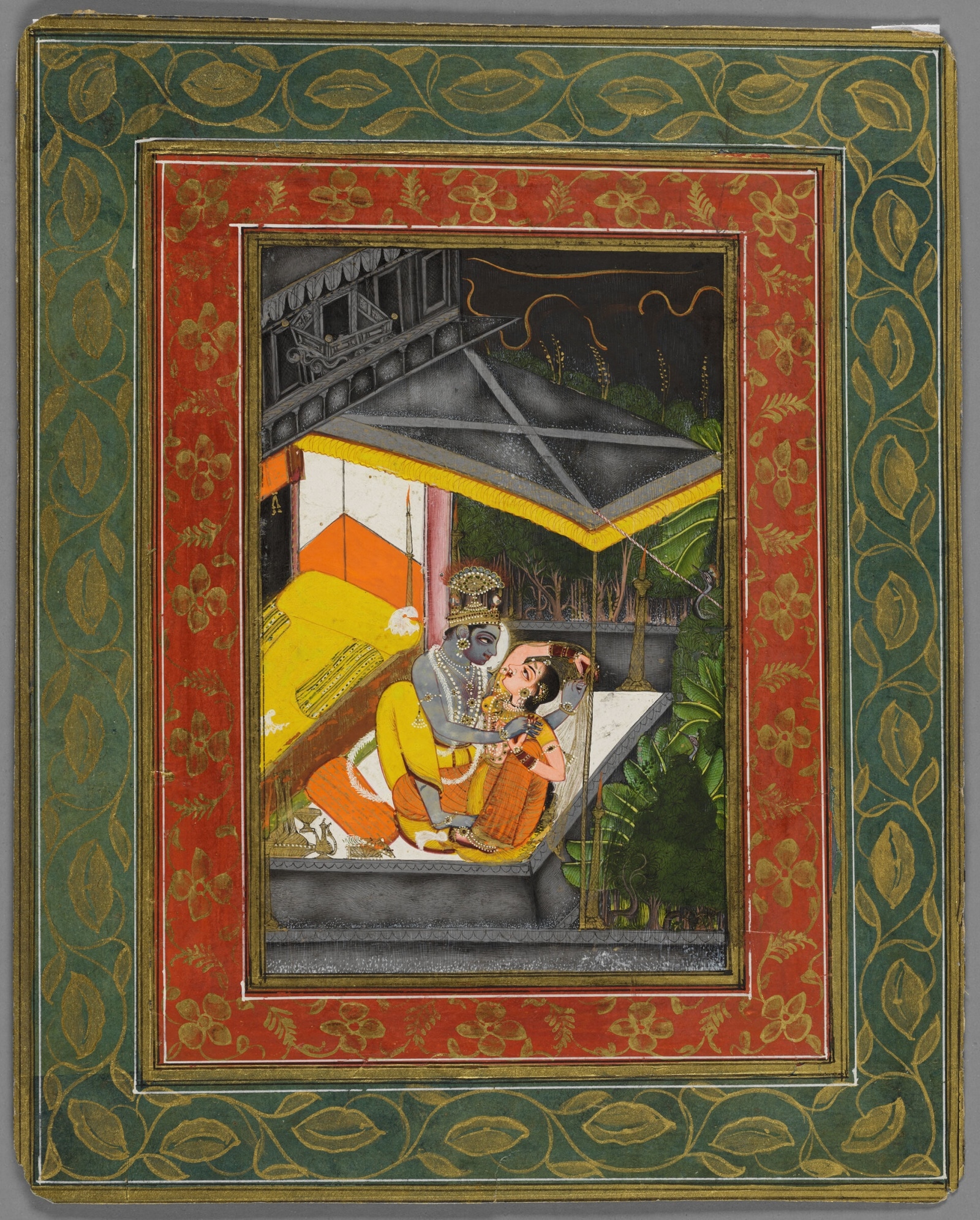 A painting of Krishna and Radha embracing each other during a storm from a royal Kota-Jaipur album. Date- 1720-1730 CE. The sound of the rain is depicted by the insistent patter of white drops that collect on the canopy above the lovers’ heads.
A painting of Krishna and Radha embracing each other during a storm from a royal Kota-Jaipur album. Date- 1720-1730 CE. The sound of the rain is depicted by the insistent patter of white drops that collect on the canopy above the lovers’ heads.
Ragamala paintings
The monsoons went on to have a far more permeating presence in the 17th-century paintings of musical modes that came to be called Ragamala paintings. This style of painting that originated in 17th-century Rajasthan depicted variations of Indian musical modes or ragas. Accordingly, in these paintings, each raga is personified by a colour and a mood, and illustrates the season of the year or the time of the day when the raga is supposed to be sung.
Story continues below this ad
The monsoon was associated with several ragas, and it was believed that singing them well could bring on the rain. “Over the course of the 17th century, the ragamala painting became a favourite among Mughal and Rajput connoisseurs,” writes Aitken in her article, adding that among these, it was the Raag Megh Malhar, depicting the monsoons, which went on to become an important precursor to a radical shift in the way Rajput and Mughal painters dealt with aesthetics.
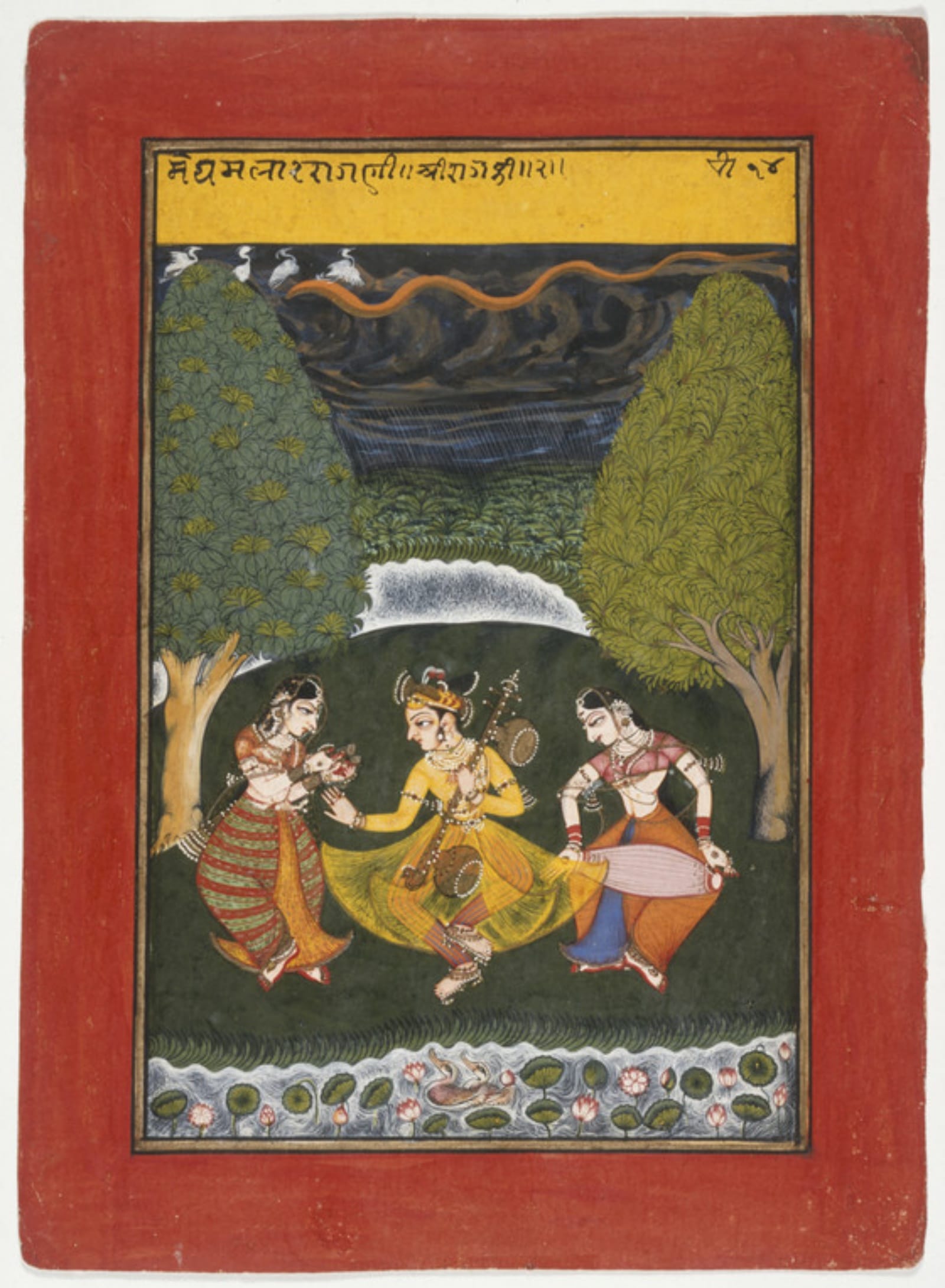 The painting shows a bejewelled prince holding a vina, and dancing joyously in the forest. He is accompanied by two dancing female musicians. The sky is full of thunder clouds with a serpentine lightning bolt, and cascading rains. Megha Malhar Raga, folio from a Ragamala. Kota, 1740 CE
The painting shows a bejewelled prince holding a vina, and dancing joyously in the forest. He is accompanied by two dancing female musicians. The sky is full of thunder clouds with a serpentine lightning bolt, and cascading rains. Megha Malhar Raga, folio from a Ragamala. Kota, 1740 CE
Barahmasa painting
The Barahmasa is a poetic tradition that emerged in medieval North India. It usually revolved around the theme of a woman longing for her lover, and described her emotional state in context of the season of the year. The Barahmasa, as the name suggests, refers to the ’12 months’. With time, the genre lent itself to other forms of art, including dance, music and paintings.
The Barahmasa paintings began developing during the Mughal rule and were at their peak during the 18th and 19th centuries. Among these paintings, the ones depicting the monsoon months are known to be the most evocative, with passionate rendering of colours and textures to show young lovers staring at clouds, or the lush countryside.
Story continues below this ad
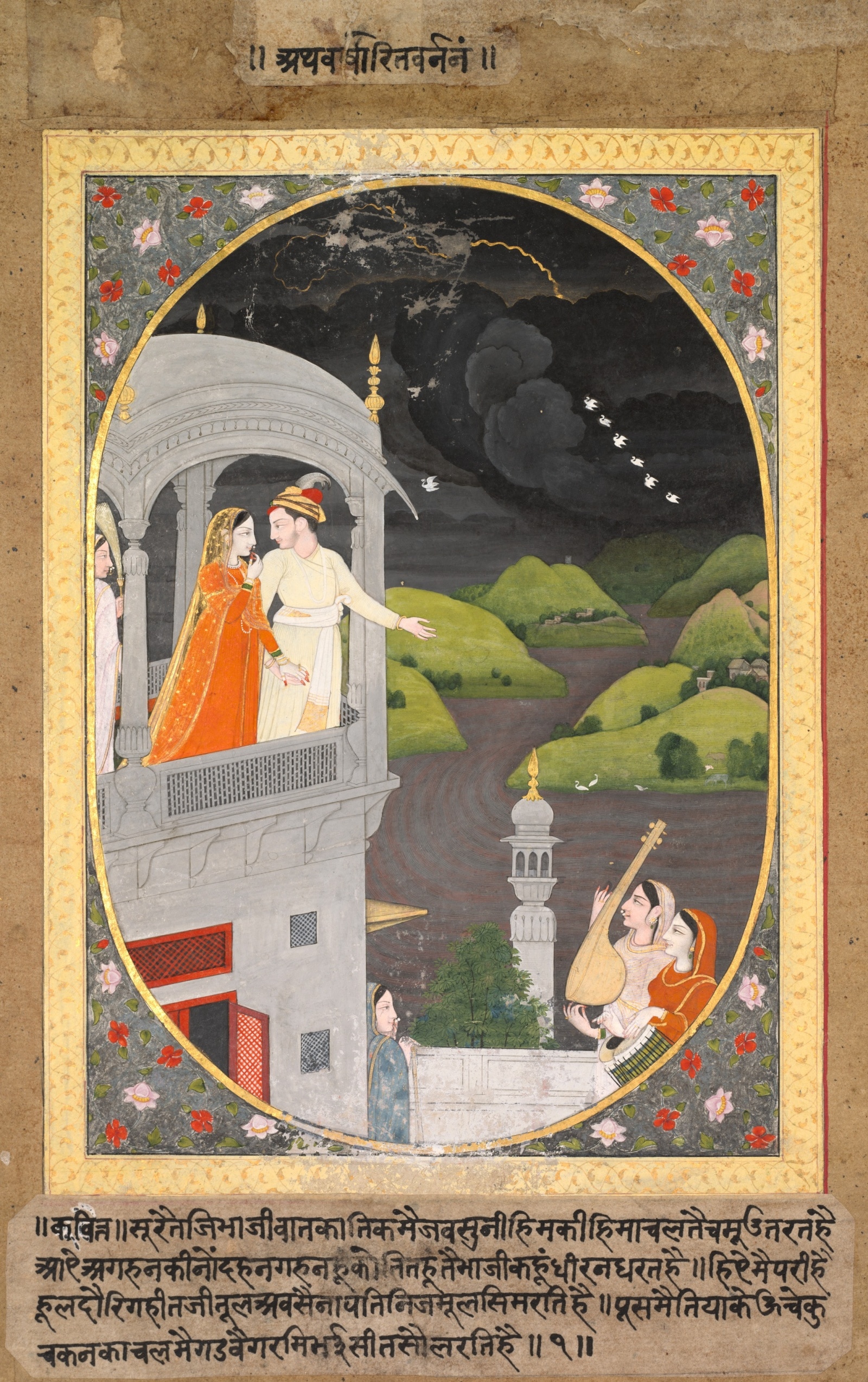 An 18th century painting from the Kangra school of art. It shows Krishna and Radha watching the rain and the clouds. The painting depicts the month of Bhadon from the Barahmasa series. (Cleveland Museum of Art)
An 18th century painting from the Kangra school of art. It shows Krishna and Radha watching the rain and the clouds. The painting depicts the month of Bhadon from the Barahmasa series. (Cleveland Museum of Art)
Kalidasa’s Meghaduta
The classical Sanskrit poem, Meghaduta, by Kalidasa has lent itself as a theme to artists painting the monsoon. The poem tells the story of a yaksha who longs for his wife and uses a cloud as a messenger. In Kalidasa’s poetic description, the beauty of the Himalayan landscape comes to life in the rainy season, with rivers flowing gracefully and elephants playing in the forests.
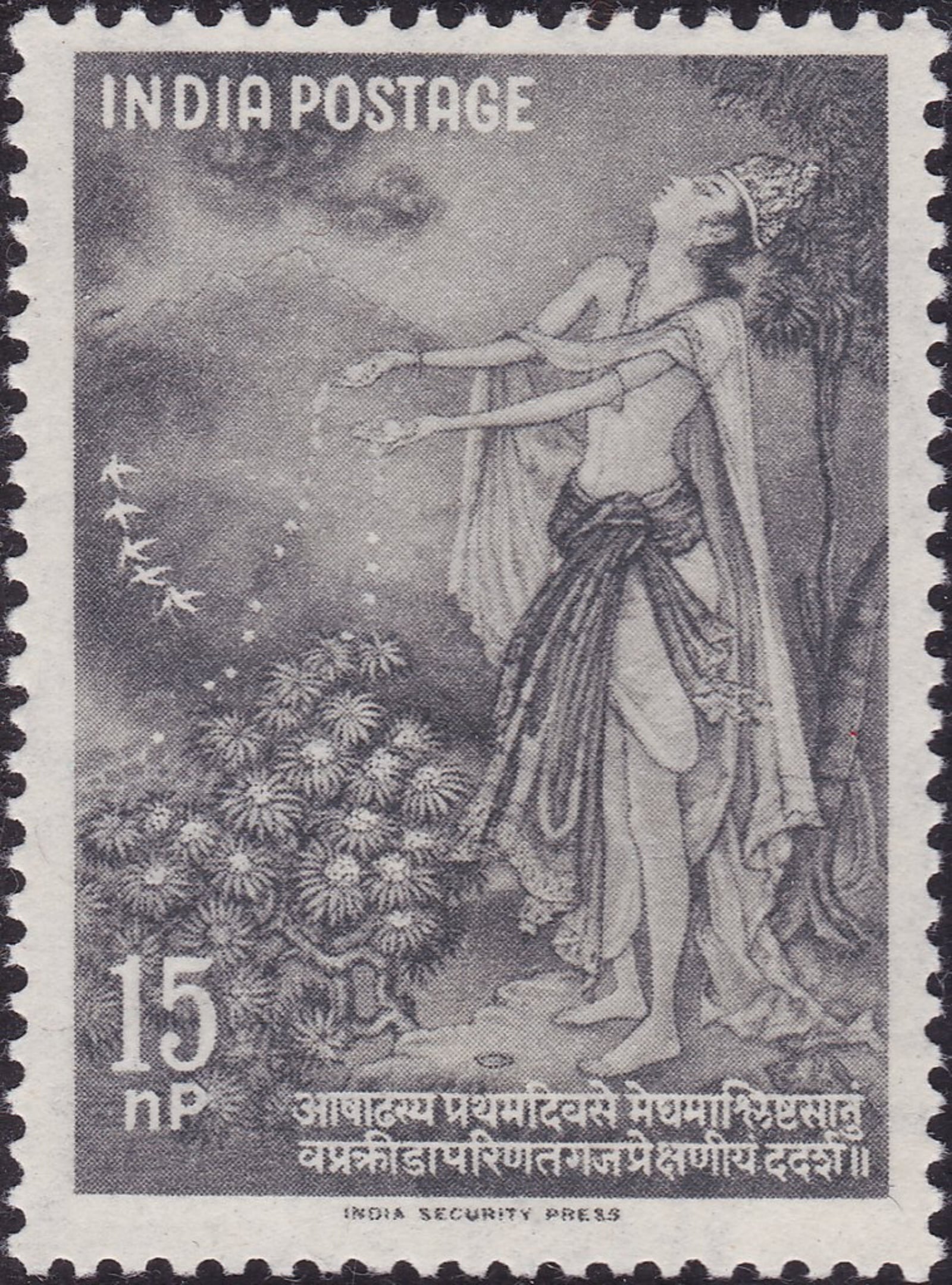 The 1960s stamp depicting Meghaduta (Wikimedia Commons)
The 1960s stamp depicting Meghaduta (Wikimedia Commons)
Kalidasa’s Meghaduta was particularly popular among artists of the late 20th century. As noted by Rajamani, Pernau and Schofield in their book, “since the late 19th century, monsoon arts became increasingly nationalised.” Kalidasa’s Meghaduta was increasingly applied in these arts to evoke national pride. A 1960 stamp, for instance, depicts the yaksha instructing the messenger cloud. He releases flower petals in the monsoon winds, which are shown to be collected by a group of cranes who carry the message towards the cloud.
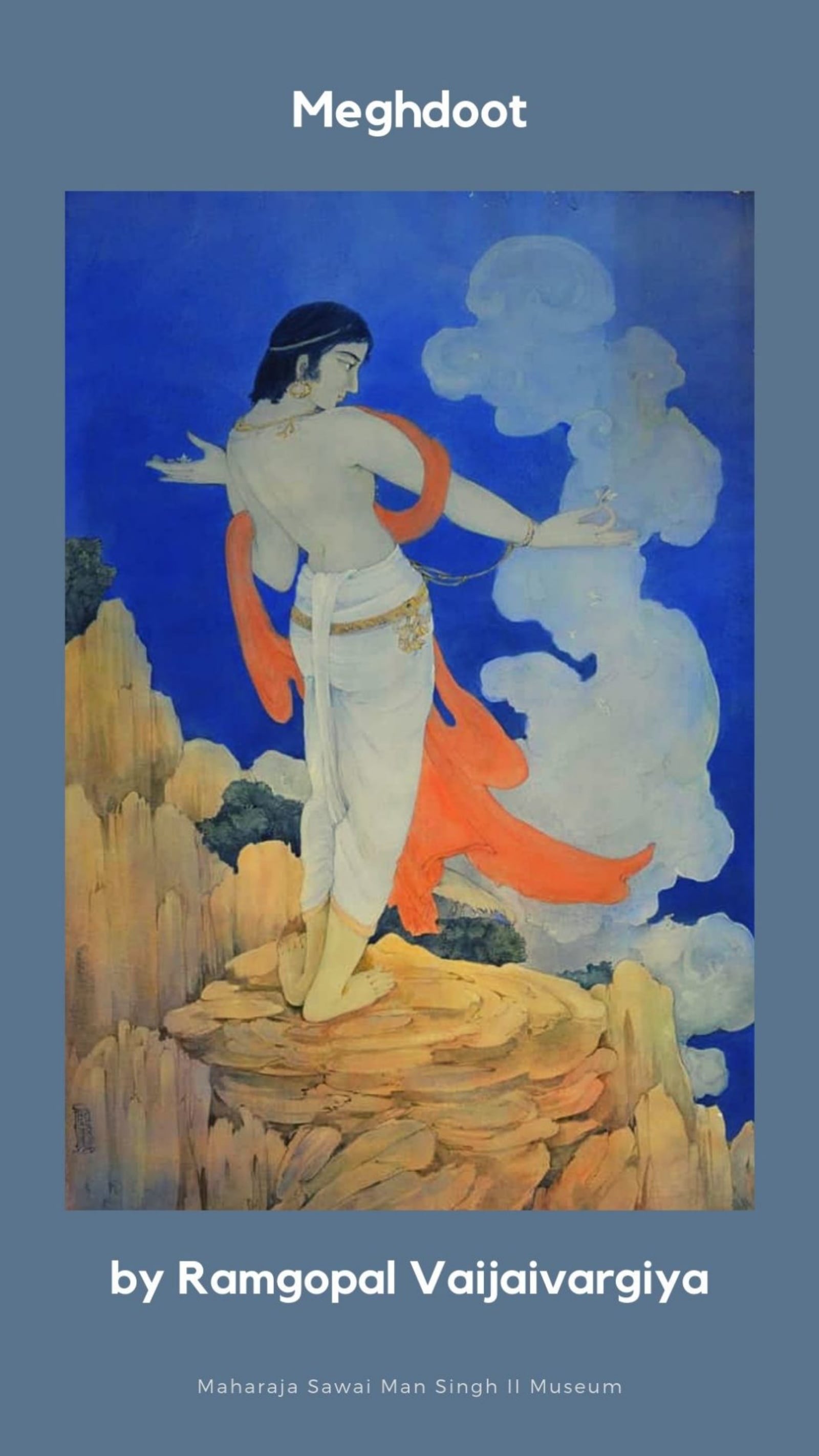 Ramgopal Vijayvargiya’s Meghdoot
Ramgopal Vijayvargiya’s Meghdoot
Notable among the painted works depicting Meghdoot are those of Ramgopal Vijaivargiya, Shailendranath De, and Harihar Lal Mead.

